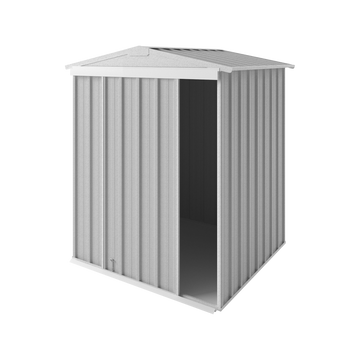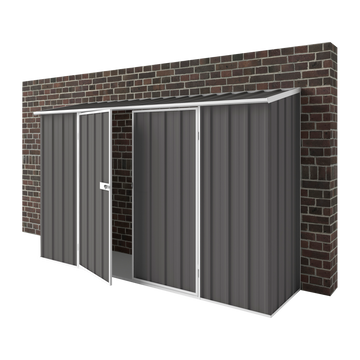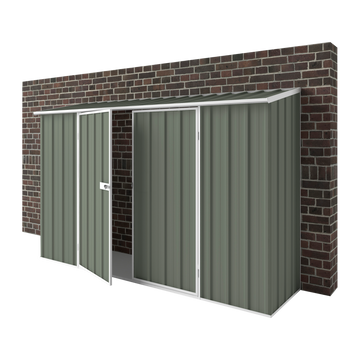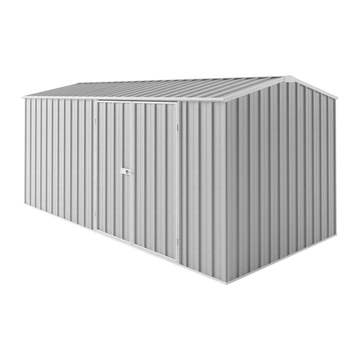A shed isn’t just outdoor storage, it’s a valuable extension to your living and recreational space! Depending on the weather conditions, your shed is prone to heat exposure or becoming damp in wet weather. It doesn’t hurt to guarantee that your tools, equipment and gear last longer.
Guarantee the longevity of your shed structure and its contents using an insulation method and shed additions that regulate it's temperature.If you plan to use your shed as a leisure area or workstation, it’s ideal to keep it warmer in winter and colder in summer.
Steel sheds are built to withstand the extremes of our climate, so why not make the inside just as tough?
Which outdoor storage insulation method is best for me?
If you’re after a long-term solution, we recommend foam boards and fiberglass insulation. If you plan to move your shed at some point but still want the benefits of a well-insulated unit, reflective insulation is a cost effective and protective option.
- Reflective Insulation: Aradiant barrier made from aluminium foil or aluminized polyester, that reduces heat and offers high performance thermal protection.
- Fibreglass Insulation: It’s made from recycled glass material melted at high temperatures and then spun into long fibers. Glass fibres hold tiny air pockets in between them, which trap air and disrupt the flow of heat.
- Foam Boards: They’re lightweight and take minimal time to install. Rigid foam boards are made from polymers like polyurethane or polystyrene, making them resistant to heat flow.
What should I consider when choosing shed insulation?
You’ll need to consider the kind of valuables you’ll be storing, and the risks associated with being in a bushfire area and the shed roof type.
- lective insulation is essential if any of your valuables are heat sensitive, a steel roof has a great lifespan but it’s also a conductor of heat in the hot sun.
- a bushfire prone area, your shed is at risk during a blaze. To follow local regulations, ensure that your shed is insulated with a BAL rated option.
- ulation creates a water barrier whether you have a pitched, flat or tilted roof. If you’d like to avoid your shed being breached by built up rainwater or being subjected to damage from wind-driven rain, you’ll value the extra layer of protection.
If your roof has a low slant, it’s important to consider insulation as part of your shed build.
Steps to weatherproof your shed
Put on your safety equipment
If you’re working with fibreglass insulation, we recommend wearing safety goggles and protective clothing, gloves and a facemask. Even if you aren’t leaning towards fiberglass insulation, it’s important to cover your hands and use safe handling techniques when working with your tools.
- Keep your shoulder level and facing the same direction as your hips.
- Turn by lifting your feet, rather than twisting and lifting equipment at the same time.
- Hold any loads as closely as possible to your body, rather than tightly with your hands.
- Keep your head up when handling, look ahead and not down at the load, once it’s held securely.
Clean out your shed
If you’ve already installed your shed and left your things inside, now’s the time to remove them and leave them in a secure place temporarily. If you’d like to do a proper job, you can’t work around the tools, gear or leisure equipment inside.
Add your insulation material
It’s time to fit your reflective insulation, foam boards or fibreglass insulation. Here’s a starting guide for using each method.
- lective Insulation: Cut it into strips to fit the frame of interior walls of the shed and attach them using a heavy-duty staple gun, ensuring that the staples are in the framing.
- m Boards: Cut to size and tape the edges, to hold them into place.
- reglass Insulation: Use a roll with a vapor barrier to control moisture. Cut to fit and press into place, then finish with plywood boards.
Consider your shed additions
By adding fixtures to your shed, you can increase the ventilation and make it more comfortable to use. We have an assortment of accessories that make your home addition an ideal place to be:
- Fibreglass Skylight: It lets natural sunlight into your shed and reduces the risk of your shed becoming damp, if it’s left in a shady location.
- Louvre Window: This five-blade window circulates natural airflow in your shed and fits in a standard width garden shed sheet.
- Whirlybird: They extract hot air through a vacuum driven by wind speed, drawing heat out of the roof space.
How can I keep my shed cool in summer?
Depending where your shed is situated, an air conditioning unit is a great idea. Fans or air conditioner units may just circulate hot air in some shed spaces, so you can consider installing a whirlybird or roof ventilator. You can choose from a range of options, though we recommend checking their suitability before adding them to your shed:
- Through The Wall Conditioners
- Portable AC Unit
- Window AC Unit
When can I start building and insulating my shed?
Now that you know how to ensure the comfort and usage of your shed, you can protect your valuable things during all kinds of weather conditions. With an insulation method that keeps your shed at a comfortable temperature, you’ll guarantee it’s lifespan.
Make the most out of your outdoor storage plans when you invest in your EasyShed today! Get in touch with us for any questions about how to get the most out of your purchase.























